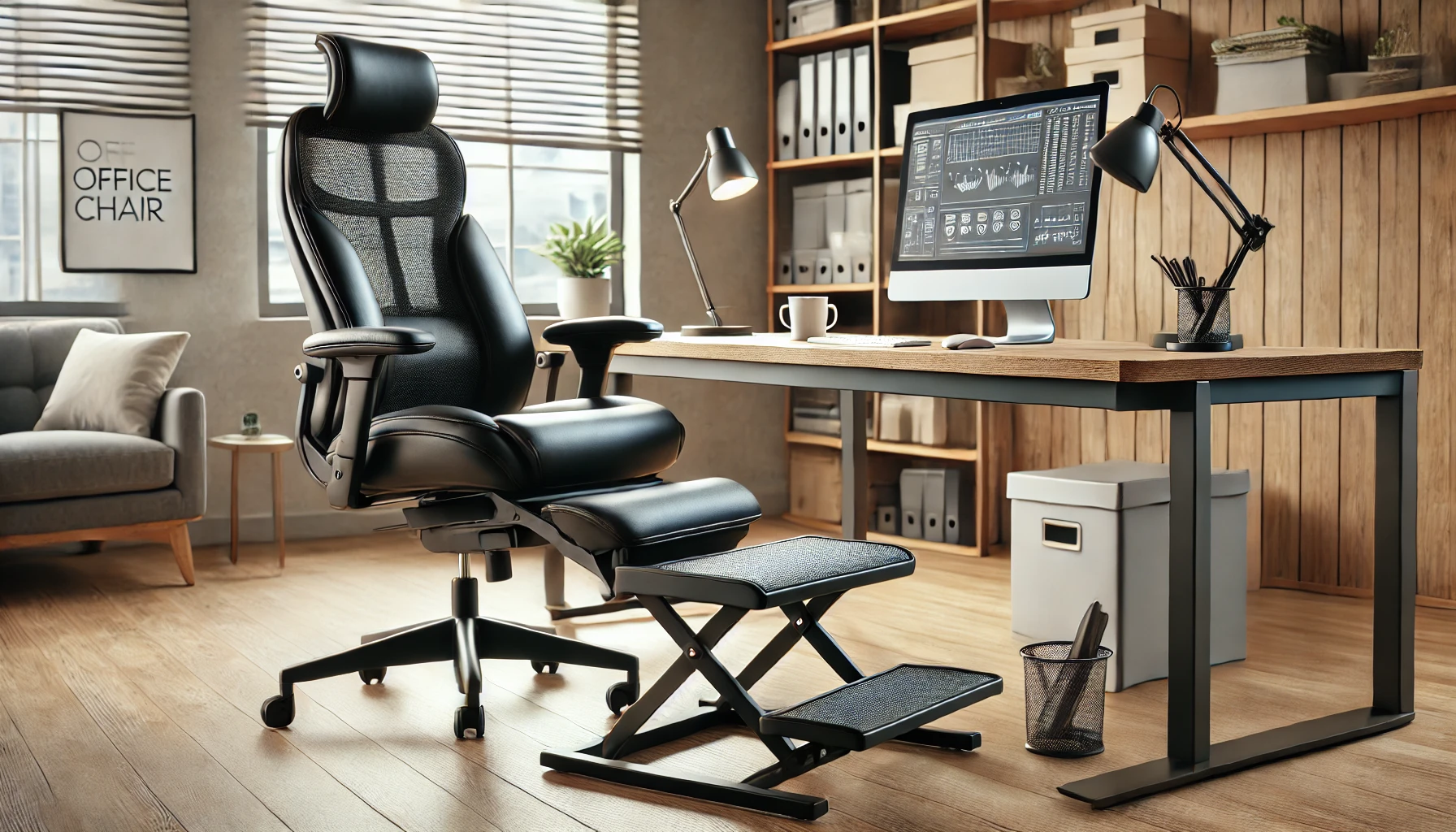A "footrest" is a piece of furniture used when sitting to support the feet and preserve proper posture. Its primary goal is to improve good posture, with a focus on the legs but also the rest of the body. The feet should be adequately supported on the floor, and the knee-to-hip angle should be precise, at 90 degrees.
Benefits of Footrests
- Improves body posture: It might be challenging to maintain proper posture throughout the day at work. One of the primary benefits of footrests is that having your feet rest on a surface allows you to maintain proper body posture. Furthermore, you may adjust your posture to provide maximum comfort.
- Improves circulation: Rocking footrests are ideal for persons with circulation issues, since they improve blood circulation.
- Reduces fatigue: Footrests may reduce weariness during extended workdays. It will decrease when compared to working days without this method. It will help relieve tension on the back and neck muscles.
- Improves productivity: The footrest enhances worker comfort and reduces tiredness, leading to higher output. As you can see, office footrests may give a variety of advantages, making them an appealing addition to your workspace.
Characteristics of a Good Footrest
- Height adjustable: Ideal for those under 160 cm or those working at high tables or counters.
- Adjustable in inclination: The support surface should allow for postural dynamism. This feature enables the foot to bend and extend forward and backward.
- Dimensions and shape: Allow for flexible foot positioning. The support surface should be at least 45 cm broad and 35 cm deep.
- Anti-slip: Stability is a key attribute. If it fails, then everything fails. The footrest must be able to remain "glued" to the floor and not slide. In general, particularly lightweight footrests slide more. As a result, it is advised that the footrest be strong, weighted, and have anti-slip technologies both in the footrest region and on the floor.
Types of Footrests
Footrests come in various styles and functionalities. Below are the most common types:
1. Adjustable Footrests
- Height and tilt can be modified for personalized comfort.
- Ideal for office workers who need ergonomic adaptability.
- Often features a textured or cushioned surface for added support.
2. Rocking or Dynamic Footrests
- Allows movement of the feet while sitting.
- Helps prevent stiffness and promotes better circulation.
- Common in workplaces where sitting for long hours is necessary.
3. Memory Foam Footrests
- Provides soft cushioning for enhanced comfort.
- Best suited for people who prefer a plush surface.
- Often features a removable and washable cover.
4. Under-Desk Footrests
- Designed for office or home desks.
- Helps maintain ergonomic seating posture.
- Available in different materials such as plastic, wood, or foam.
5. Hammock-Style Footrests
- A fabric sling that hangs under a desk for leg support.
- Offers a relaxing position for casual sitting.
- Mostly used in home or gaming setups.
6. Footrests with Massage Features
- Comes with rollers, bumps, or massaging textures.
- Stimulates circulation and relieves tension in the feet.
- Some advanced models include heating features.
7. Travel and Portable Footrests
- Compact and foldable for easy transport.
- Used in cars, planes, or remote work settings.
- Provides relief during long travel hours.
Key Considerations When Buying a Footrest
- Ergonomics and Adjustability: Look for a footrest with adjustable height and tilt features to ensure maximum comfort and proper posture alignment.
- Material and Durability: Choose a sturdy and durable footrest made from high-quality materials like metal, hard plastic, or memory foam for longevity.
- Size and Compatibility: Ensure the footrest fits comfortably under your desk or workstation and provides enough space for movement.
- Anti-Slip Surface: A textured or rubberized surface helps keep feet in place and prevents slipping.
- Portability and Storage: For those who need a mobile solution, a lightweight and foldable footrest is an ideal option.
- Ease of Maintenance: Some footrests come with removable covers or washable materials, making them easy to clean and maintain.
How to Use a Footrest Properly
- Position the footrest at a comfortable height – Your thighs should be parallel to the floor, and your feet should rest naturally.
- Use the tilt function if available – Adjust it to ensure a comfortable angle that keeps your legs relaxed.
- Move your feet occasionally – Dynamic footrests allow small movements to improve circulation.
- Pair with a good ergonomic chair – A footrest complements a high-quality chair for optimal posture support.
Conclusion
A footrest is more than just an accessory—it’s an essential ergonomic tool that enhances posture, circulation, and overall comfort. Whether for work, gaming, travel, or medical needs, choosing the right footrest can make a significant difference in daily comfort and health. Investing in a high-quality footrest tailored to your needs ensures a more ergonomic and pain-free experience in any setting.

